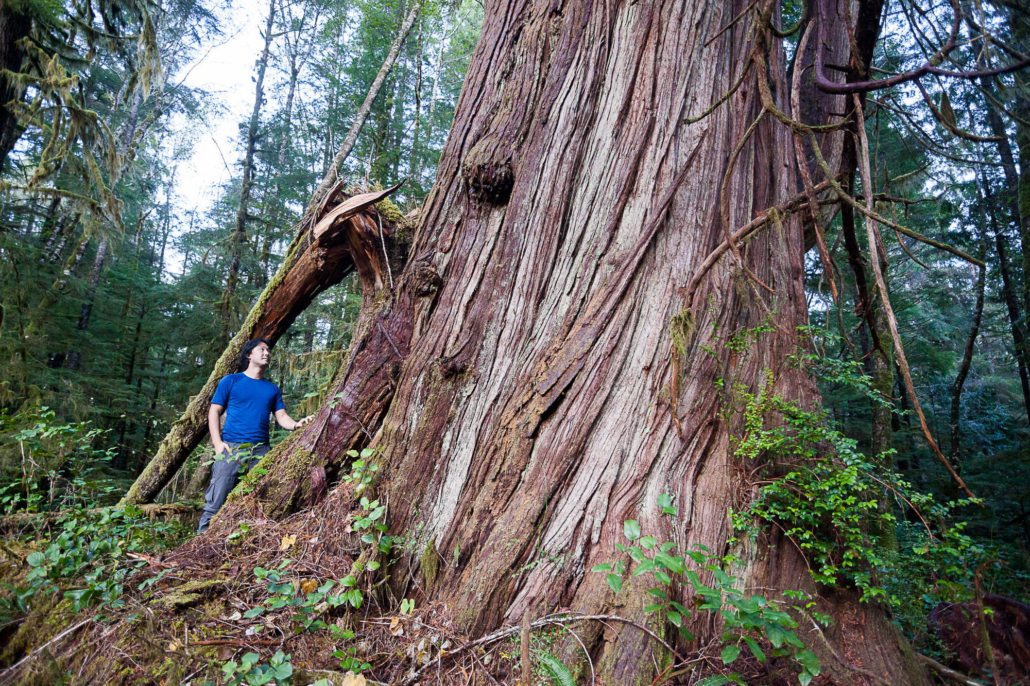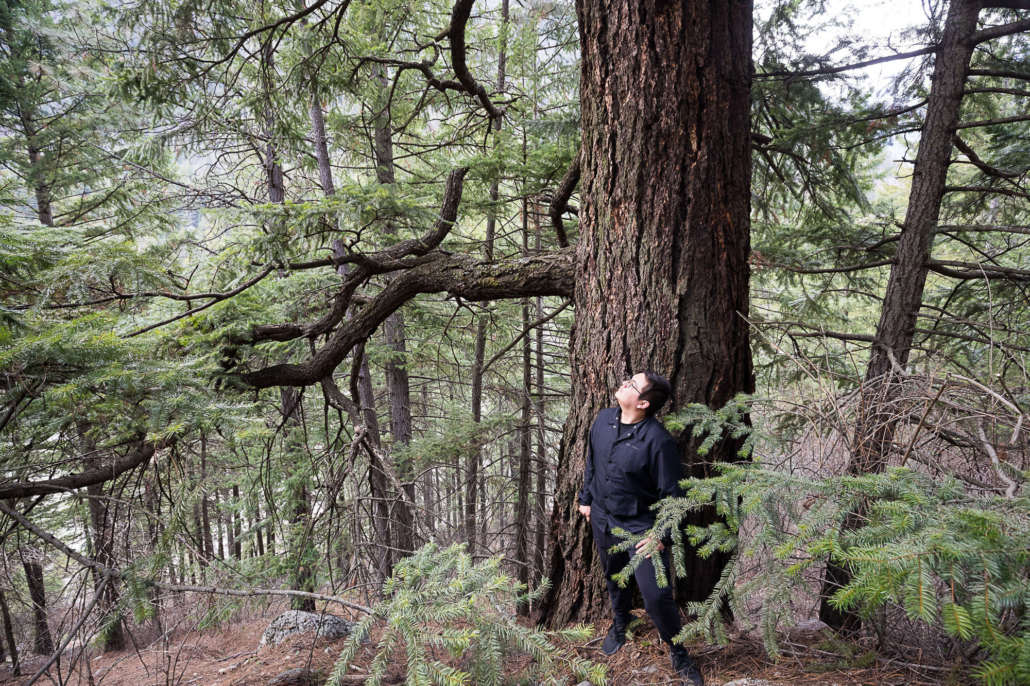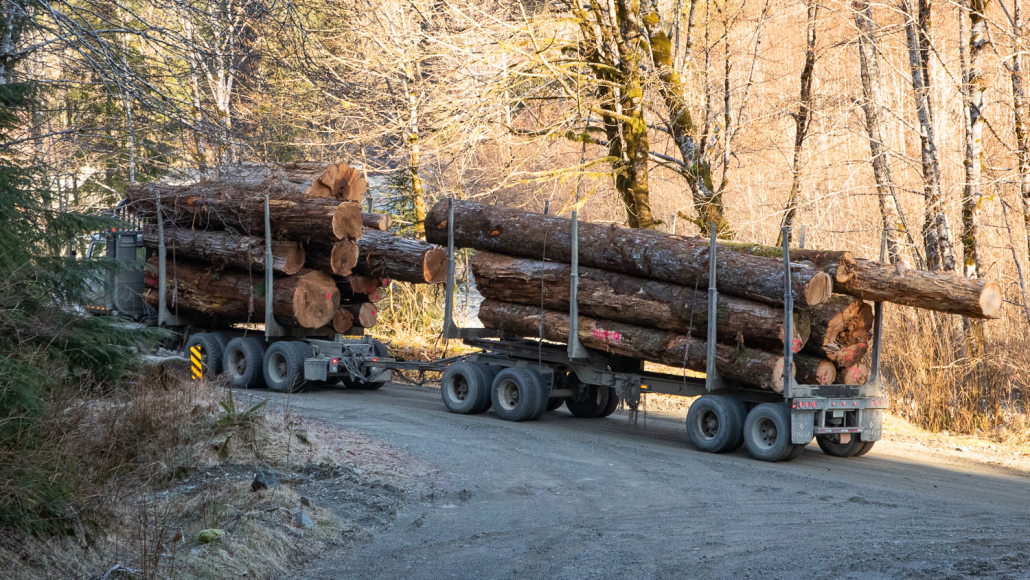 May 5 2023
May 5 2023Motion for Old-Growth Fund & Export Ban Introduced by MP Patrick Weiler
For Immediate Release
May 5, 2023
MP Patrick Weiler Introduces Motion to Launch the $82 million Old-Growth Protection Fund ($164 million with BC matching funds) and to End Old-Growth Log and Wood Product Exports
The Ancient Forest Alliance (AFA) and the Endangered Ecosystems Alliance (EEA) give great thanks to Member of Parliament Patrick Weiler (West Vancouver-Sunshine Coast-Sea to Sky Country) for his new motion to help protect old-growth forests in BC and Canada.
Weiler has crafted a motion, introduced into federal Parliament yesterday, calling for the $82 million BC Old-Growth Protection Fund (increased from $50 million previously, and contingent on matching BC funding that would bring it to $164 million), to end the international export of old-growth raw logs and wood products from across Canada as quickly as possible (and by no later than 2030), and to protect old-growth on federal lands on Department of National Defense and National Park lands from any destructive infrastructure developments.
If implemented, these motions will be significant contributions to help protect old-growth forests in BC and across Canada, where the main “War in the Woods” over old-growth forests has taken place over half a century.
“We welcome this motion by MP Patrick Weiler. $82 million dedicated to old-growth protection in BC, when matched by the province for a total of $164 million, is no small sum. It would result in a major leap forward to protect old-growth forests here, along with a much larger federal-provincial BC Nature Agreement fund — as would a rapid phase-out on the export of old-growth wood products across Canada with an emphasis on second- and third-growth wood products instead. We commend Weiler for taking the initiative here to help keep the ball rolling for old-growth protection,” stated TJ Watt, Ancient Forest Alliance campaigner and photographer.

Ancient Forest Alliance campaigner & photographer TJ Watt stands beside a giant old-growth redcedar growing unprotected on northwestern Vancouver Island in Quatsino territory.
“The Biden administration in the US is now creating a pathway that could end old-growth logging on their federal public lands across the country, and BC and Canada need to do the same. MP Patrick Weiler is starting this process, and I hope his positive motion pushes the province to really get on track — as the province is directly in charge of provincially-managed Crown lands where the vast majority of old-growth forests stand, along with the local First Nations whose unceded territories it is. Premier Eby’s recent move to embrace the 30% by 2030 target and to undertake a conservation financing mechanism to fund First Nations IPCA plans should be applauded. However, there is still significant space for spin and sophistry to keep the status quo of old-growth forest liquidation safeguarded as new provincial policies are being developed. I can see many of the same old actors from the old-growth timber industry and old timber bureaucracy at work in this regard right now, and they are both pervasive and clever,” stated Ken Wu, Endangered Ecosystems Alliance executive director.
There are elements in the provincial government that appear to be employing a number of different strategies in an attempt to contain change and extend the life of the destructive status quo of old-growth liquidation, including efforts to minimize the centrality of fully protected areas — and instead to emphasize better old-growth logging rather than no logging of old-growth as the first consideration, as well as “conservation” areas that keep the door open for commercial old-growth logging. Other apparent strategies include minimizing ecosystem-based protected areas targets, including failing to distinguish between big-treed vs small-treed old-growth forests (forest productivity distinctions); minimizing the role of science and scientists in developing ecosystem-based targets in conjunction with Traditional Ecological Knowledge holders; and making conservation financing primarily about capacity and stewardship funding rather than about sustainable economic development funding to supplant the old-growth logging dependency in many First Nations communities.

Ancient Forest Alliance Campaigner & Photographer TJ Watt stands atop the stump of an old-growth redcedar tree cut in 2022 the Klanawa Valley on Vancouver Island in Huu-ay-aht territory.
The federal government has been offering significant funding for years of several hundred million dollars, contingent on an agreement for matching funds from BC — to drastically expand the protected areas system across the province as part of Canada’s commitment to protect 25% of the country’s land area by 2025 and 30% by 2030 (BC has committed to the latter target). Currently 15% of BC is in legislated protected areas. Negotiations over a BC Nature Fund between the federal and provincial governments have been ongoing for two and a half years (since January of 2021), and now include First Nations, and an agreement is expected in the not distant future.

Endangered Ecosystems Alliance executive director Ken Wu stands beside a giant old-growth redcedar tree growing unprotected on Nootka Island in Mowachaht/ Muchalaht territory.
The provincial government has also stated that they will have a conservation financing mechanism in place by the end of June, and the EEA and AFA are encouraging the province to ensure that they bring in both provincial and federal contributions into that fund (not just private donations) which can be used to help ensure both old-growth logging deferrals and protected areas, including by providing the needed funds to First Nations for their capacity, stewardship, and sustainable business development needs linked to new Indigenous Protected and Conserved Areas (typically legislated via Provincial Conservancy and various Protected Areas designations provincially).
The original sum of $50 million for a BC Old-Growth Fund has now been increased by MP Weiler and his colleagues to $81.9 million. If matched by provincial funds, it would be $164 million to help First Nations and other parties to specifically protect some of the grandest and most endangered old-growth forests in BC, with an emphasis on protecting Coastal and Inland old-growth rainforests and Interior Douglas-fir forests. Weiler also noted that additional federal protected areas funds are available from the $2.3 billion in terrestrial protected areas funding, as well as from the several billion dollar Nature Smart Climate Fund, that would also help protect old-growth forests in BC as part of the overall effort to expand protected areas in the province and across the country.
Old-growth forests across BC are on the unceded territories of diverse First Nations, whose consent is a legal necessity for the establishment of new protected areas on Crown/unceded First Nations lands (ie. the provincial government cannot unilaterally just protect old-growth forests in BC — the support of the local First Nations is needed, and the province should undertake the policy framework and provide key funding as part of the “enabling conditions” to facilitate interested First Nations to establish new protected areas). Across BC, many or most First Nations have a major economic dependency on timber revenues and jobs, including on old-growth forestry.

Land Guardian Domonique Samson with the Kanaka Bar Indian Band stands beside an old-growth Douglas-fir tree on a property recently purchased by the Nature-Based Solutions Foundation to be given back to the band with a conservation covenant.
“Conservation financing” refers to funding from governments and private sources for the development of sustainable economic alternatives in First Nations and other communities that enable the development of Indigenous businesses and jobs in eco- and cultural tourism, clean energy, sustainable seafood, non-timber forest products (eg. wild mushrooms) and other industries, linked to the establishment of new Indigenous Protected and Conserved Areas (IPCAs). In the Great Bear Rainforest, Haida Gwaii, and currently in Clayoqout Sound, major conservation financing funds from the federal and provincial governments, environmental groups, and carbon offset projects have enabled high levels of forest protection and conservation to move forward. The Endangered Ecosystems Alliance and the Ancient Forest Alliance, with our partner organization the Nature-Based Solutions Foundation, are now moving ahead with similar conservation financing projects to support old-growth protection initiatives and new IPCAs by the Kanaka Bar Indian Band near Lytton and the Salmon Parks initiative of the Mowachaht/ Muchalaht First Nation.
Over 80% of the medium to high productivity forest lands (places that typically grow the largest trees the fastest) in BC are now second-growth. With appropriate government incentives and regulations, old-growth forests can be protected while forestry employment levels could be enhanced with the development of a sustainable, value-added second-growth forest industry. This is particularly true if the extensive second-growth harvest (which currently is also unsustainable), which already contributes most of the cut in BC, is turned into higher end wood products in the province, rather than being shipped out as raw log exports. Eby is now starting to provide funding for a value-added transition for industry to manufacture smaller diameter (ie. mainly second-growth) logs, and we encourage him to continue this trajectory, while the federal government is also starting to support the value-added sector.
Old-growth forests are typically defined by the BC government as stands older than 250 years on the Coast and older than 140 years in BC’s Interior, although old-growth characteristics (canopy gaps, well-developed understories, multi-layered canopies, large woody debris) can develop in significantly younger stands in many areas.
Old-growth forests are vital to support endangered species, the climate, tourism and recreation, clean water, wild salmon, and diverse First Nations cultures whose unceded territories it is. Old-growth forests have unique characteristics that are not replicated in the ensuing second-growth tree plantations that they are being replaced with. Because they are re-logged every 50 to 60 years on BC’s coast and every 80 to 100 years in the Interior, they never become old-growth again. As a result, old-growth logging is not a sustainable activity under BC’s and Canada’s system of forestry but is more similar to “forest mining”.

A logging truck loaded with old-growth logs passes through the Klanawa Valley on Vancouver Island.





